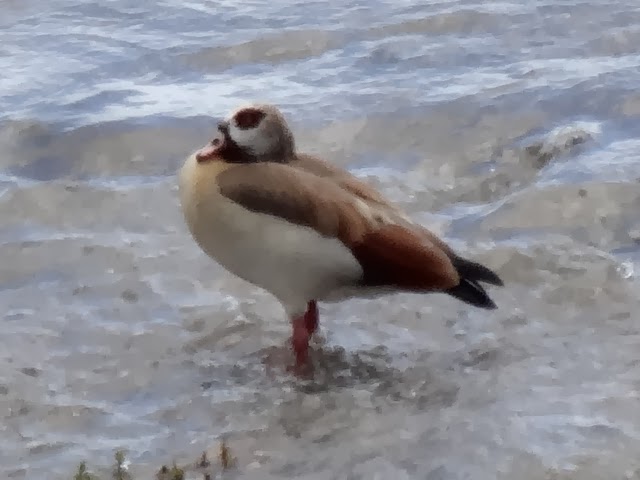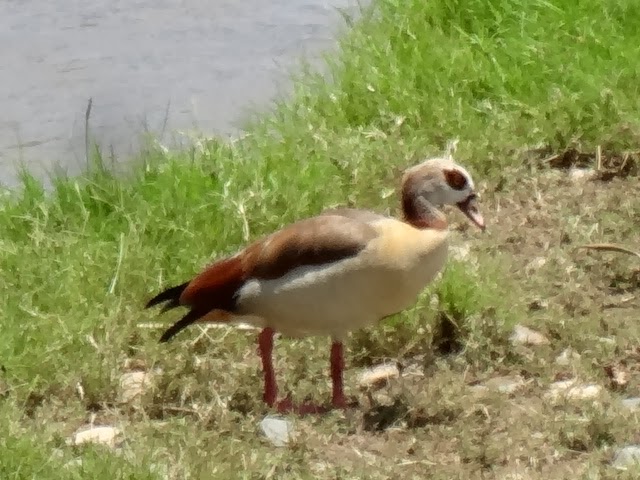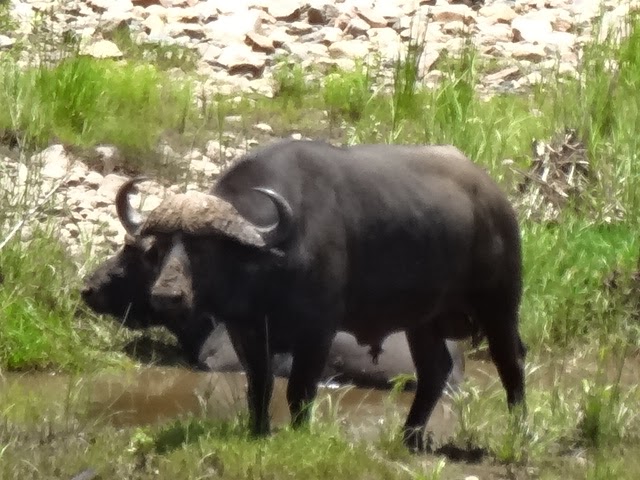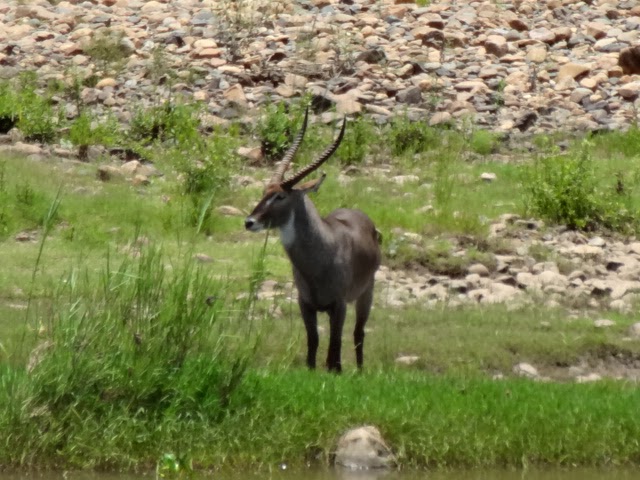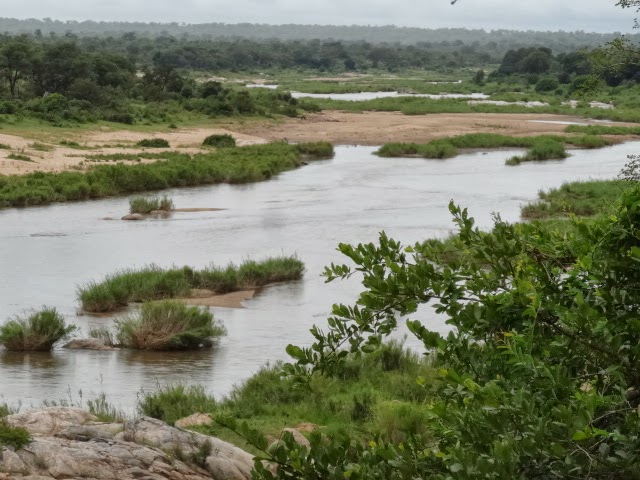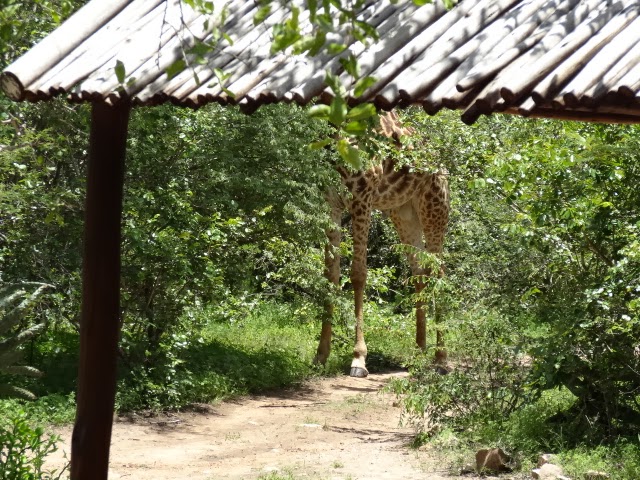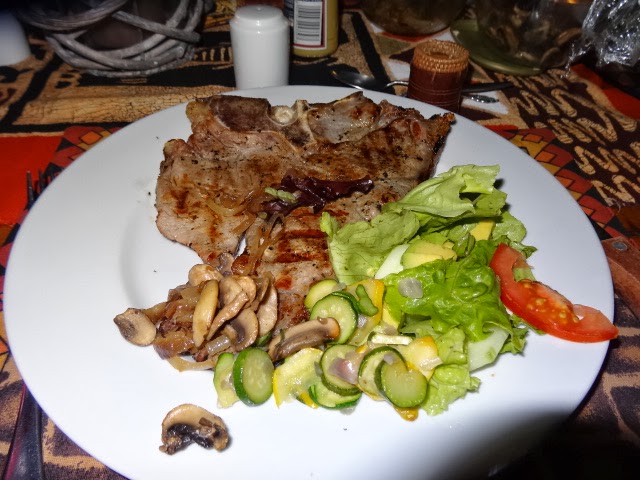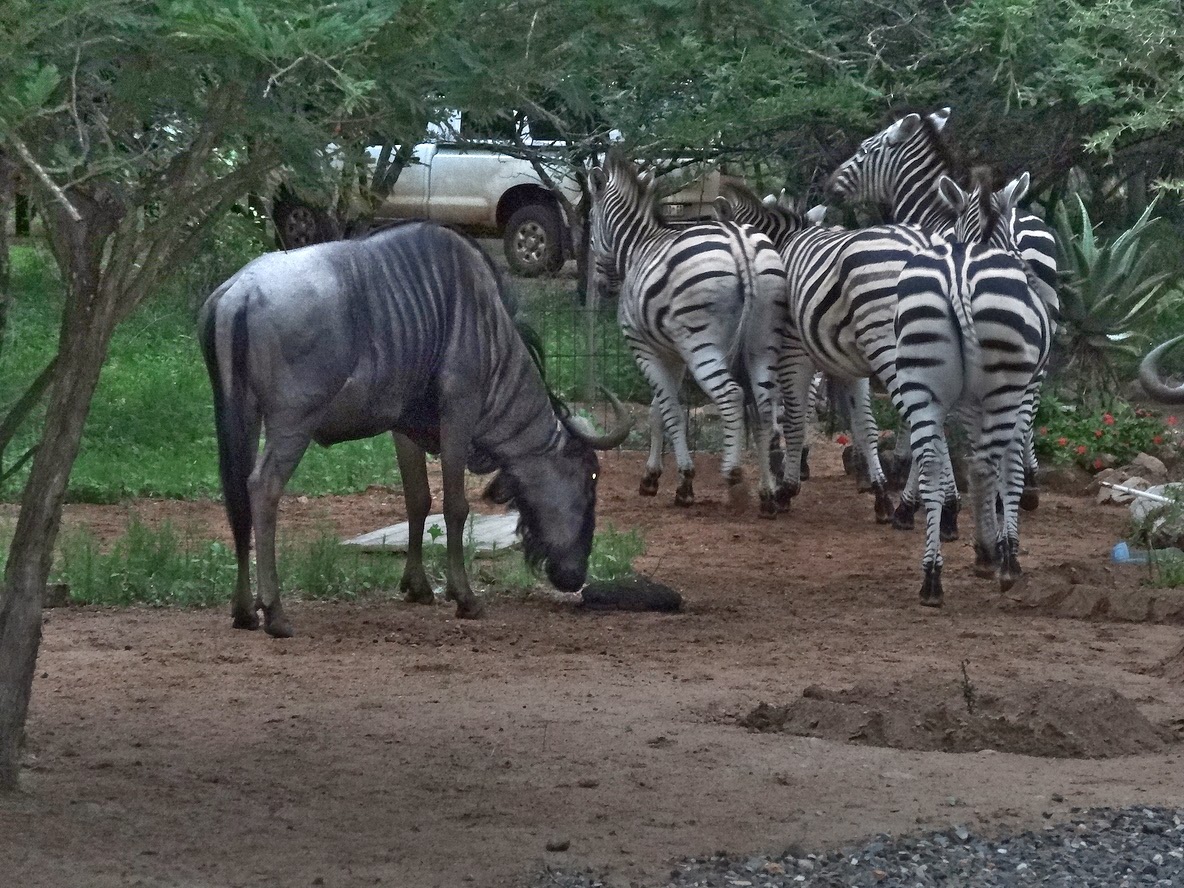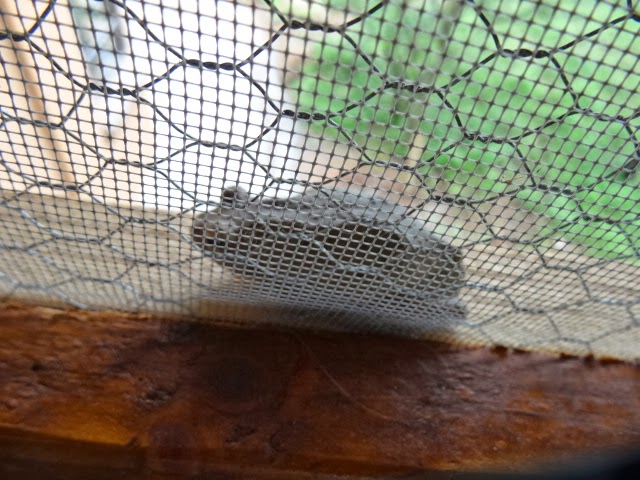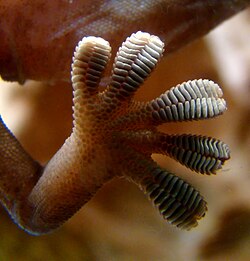 |
| Sunset at dinner on the Crocodile River. Notice the Crocodile swimming across the river in the lower left. We watched for a considerable time, hoping he’d exit the river. Instead, he languished in the water, eyes revealed while waiting for his dinner. |
Wednesday afternoon, while carrying my laptop from the first floor to the second-floor loft which we use as a living room on hot days, (it has AC), for no reason at all, the laptop fell from my hands dropping onto the stone floor.
 |
| This lower-right corner of my laptop broke when I dropped it, disabling the touchscreen feature. There are numerous hairline cracks throughout the remainder of the screen. |
Horrified, I bent down to pick it up, as shards of glass skittered about the floor. Oh, oh. I felt sick to my stomach as it set it down to see how severe the damage and if it would still work.
 |
| The sky over the Crocodile River manages to be more beautiful than many other areas. |
Immediately turning it on, I was amazed to find it working. The damage was to the touchscreen which no longer works and there are cracks across the screen affecting the viewing of the screen. It was clear that I’d need a replacement.
 |
| As the night fell, with the distance across the crocodile, it was tough to get clear shots. This was the first time we’d seen more than one waterbuck at a time. |
Tom and I have each had our own computers since 1992, when we decided that sharing was not an option when we both enjoyed being online simultaneously, frequently talking, laughing, and sharing tidbits of information we gleaned in the process.
 |
| Sorry for the blur. These photos were taken from a vast distance near dark. |
Now, 22 years later, we are online at about the same time, ensuring neither of us is ever annoyed when the other is spending extended periods online. Currently spending a half a day, each day, writing here and posting photos, and, later working on photos for the next day, there’s absolutely no way we would or could share.
If it was completely destroyed, all of my files were backed up to the free cloud, Dropbox, leaving me with no worries about losing the 1000’s of photos and documents relative to our travels and financial matters.
 |
| View from the veranda of the Serene Oasis Restaurant as we watched the Crocodile cross the river from the Marloth Park side to the Kruger National Park side. |
For Tom, as a part-time researcher and proofreader for our site, having to share his computer would result in our world becoming upside down until we could figure out a replacement. Looking online I panicked when a comparable replacement with fast international shipping would be well over US $1000, ZAR $10,921.
 |
| A waterbuck and white bird hanging out on the river bank. |
Our laptops serve as not only a source of writing about our world travels, but also as a means of staying in touch with family and friends, banking, financial matters, tracking our expenses, and current and future planning. Plus, without watching TV, it’s a significant source of entertainment when we’re not out and about.
When one only cooks dinner four times per week, has the house cleaned by others twice a week, has all the laundry washed, dried, and folded by others twice a week, one must have a source of distraction for several hours each day rather than staring into space. These services were all included in our rental.
 |
| A pair of waterbucks, posing from afar. |
Our primary source of entertainment each day since arriving in Marloth Park on December 1st has been the glorious experience of sitting outside on the veranda, waiting for wildlife to visit. Although much of our time is spent scanning the bush, we still have ample hours to peruse online while we wait.
Yes, we do go out no less than three or four days/nights each week, loving every moment. We all have some downtime to fill. Perhaps for us, with no household chores to tackle, no lawn to mow, no garden to weed, no snow to shovel, we have more free time than most. I’m not complaining. We love it!
 |
| Five waterbucks walked across this shallow area of the Crocodile River to visit this island. |
We discovered that purchasing a comparable laptop online, presented its own share of issues: international shipping and customs fees, add as much as 25% to the price. Also, a mailed computer could easily get stuck in customs upon entering South Africa, never arriving before we leave in five weeks.
If anything were to go wrong with the replacement, dealing with it from afar would be cumbersome when Skype is our only means of making phone calls.
After all this time, I still haven’t had the broken screen on my smartphone repaired after I dropped it on the cement by the pool in Belize last March. With the inconvenience of arranging for service from outside the US, it wasn’t worth the trouble. Yeah, I know. I’m clumsy, breaking both a phone and a laptop in one 12 month period. Tom says I’m “a bull in a China shop.”
 |
| Finally, darkness fell and we went indoors for dinner. |
Bless his heart, Tom didn’t say a negative word.He knew I was torturing myself enough for both of us.He offered to swap laptops with me, but I refused. Why should he have to deal with this?
We contacted Louise, our lovely property manager, asking if there was a nearby computer store. Alas, we were in luck. She told us that there was a quality store in Komatipoort and to ask for her friend Jorge. We were heading there for groceries anyway, so this was perfect.
Off we went at noon with Okee Dokee. She knew exactly where the computer store was located, tucked away down a long alley in the back of other stores. If we’d still had a rental car, we’d have had a heck of a time finding it.
Meeting with Jorge, I explained all the specs I wanted, basically a newer model replacement of my touchscreen computer which sells online in the US for around US $700, ZAR $7705.39. Jorge, a very kind man, said he’d call or text later in the day when he got a quote for the replacement.
A few hours later, Jorge sent a text with the price for the replacement, which proved to be twice our original cost, twice the current price online in the US. His price was US $1350, ZAR $14,860, all-inclusive. I flinched. Yes, this would avoid shipping and some customs fees. And, we may have considered it, if it had been any other brand name than offered, not worthy of a bashing mention here.
Later, back at home, I decided to make a serious assessment to determine if I could live with the damaged computer. Last night, we watched a movie after returning home from dinner. After a while, we got used to the cracks in the center of the screen.
I can still use the computer using keystrokes to maneuver, as opposed to the ease of using the former touchscreen. I can get past the cracks and the continuous dropping of small shards of glass. I can make it work until we get to Boston in less than eight months where we’ll make a new purchase if it holds up until then.
At least it wasn’t a snake bite. Or, a centipede sting! In the realm of things, having to pay for a replacement laptop is merely an annoyance and unexpected expense. By the time we get to Boston, our laptops will be two years old anyway and we both may be due for a replacement.
We’ve been very blessed in our travels these past 15 months. Who’s to complain? Not I!













































